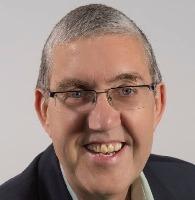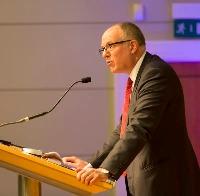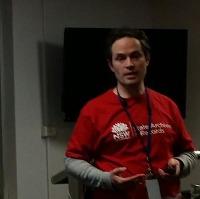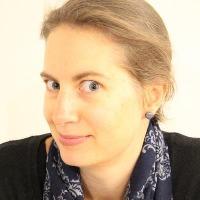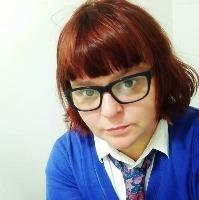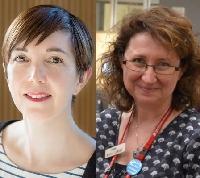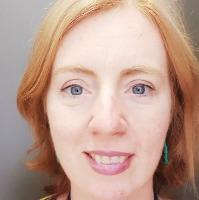Blog
Unless otherwise stated, content is shared under CC-BY-NC Licence
The Maturing of Digital Preservation
Ross Harvey is Professor at Monash University in Melbourne, Australia
I’ve been thinking lately about the maturing of digital preservation. Exactly when it was born is difficult to determine. Wikipedia’s ‘Timeline of Digital Preservation’[1] starts in 1972, and Peter Hirtle suggests ‘at least the 1960s’.[2] Other contenders include the establishment of data archives in the 1960s. But although its precise age is debatable, we can agree that digital preservation has been around long enough to have developed processes, standards, theories, and ways of thinking that the digital preservation community generally accepts. For example, that the OAIS Reference Model is the basis for digital preservation systems, or that we need geographically-distributed copies – although there is no consensus about how many.
The importance of digital preservation
Richard Ovenden is President of the Digital Preservation Coalition, and Bodley's Librarian at The Bodleian Libraries, University of Oxford
I am really pleased to be celebrating World Digital Preservation Day (#WDPD2018) in Amsterdam, with the Netwerk Digital Erfgoed at the Annual Digital Preservation Awards event at the Amsterdam Museum. #WDPD2018 succeeds International Digital Preservation Day and aims to celebrate the work that is done across the globe to protect information created in digital form, and to mark the efforts made by the communities of practice that work in this vitally important area.
Automation in digital preservation
Richard Lehane is an archives and recordkeeping consultant with Recordkeeping Innovation, Sydney, Australia. Next year he'll be joining the IAEA's Archives team in Vienna, Austria
When I find spare moments, I work on siegfried, a file format identification tool like DROID and fido. I've been tinkering on it now for over five years. Automation has been critical for me to sustain the project; otherwise I just wouldn’t be able to attend to all the things that need doing, besides improving the tool itself. So far I’ve automated:
- testing,
- building and publishing releases,
- updating signatures,
- profiling the codebase,
- and benchmarking.
Automating these processes isn’t just about relieving me of manual work and freeing up time, it is also about putting in safety nets so that I can dive in and make changes knowing that any serious errors or regressions will surface in the tests and benchmarks.
TownsWeb Archiving celebrates World Digital Preservation Day with a WEEK of announcing digital access
Marshall Parr works for TownsWeb Archiving
We have decided to celebrate World Digital Preservation Day with an entire week of announcing organisations who have made the leap to digitising their collections and providing access online. We have helped each of these organisations using our PastView System to manage and publish their collections online. Keep an eye on our Twitter page, as we celebrate new websites every day this week.
Making Australia’s biodiversity literature openly accessible and discoverable online
Nicole Kearney is Manager of Biodiversity Heritage Library Australia at Museums Victoria
The Biodiversity Heritage Library (BHL) is the world’s largest online repository of biodiversity literature and archival materials. I manage the Australian component of this global project and, to celebrate world digital preservation day, I’ve been asked to share what we do to make Australia’s biodiversity literature openly accessible and discoverable online.
Digitising David
Michaela Hart is Senior Archivist for the Department of Health and Human Services Victoria, Australia
What better way to celebrate World Digital Preservation Day than tell a story about global superstar David Attenborough? I hope folks will let me know if I’ve drawn the bow too long.
This case study demonstrates some of the complexity of working with audio-visual material, and how this archivist was able to justify watching a 40-year-old documentary on a Friday afternoon. I am working on a project to digitise magnetic tapes that were acquired by our archives during the 1990s when most of the psychiatric intuitions were closing. Some of the tapes contain recordings with clients on them, but this particular accession contains educational material, recorded seminars, and talks.
Digitising the Dorothy Hill collection at the University of Queensland Library
Mandy Swingle and Kellie Ashley are Curators at the University of Queensland
In 2017, The University of Queensland Library unveiled an online exhibition about Professor Dorothy Hill (1907-1997), Australia’s first female professor. This exhibition is the result of an 18 month project that showcases the extensive collection of papers she donated to the Library and celebrates the scientific contribution of one of Australia’s leading academics. The exhibition features digitised content curated from the ninety boxes of her collection. Today, on World Digital Preservation Day, we are excited to share our story of how we aim to digitally preserve this wonderful collection.
(What A) Wonderful World
Back in February of this year I wrote a post for this blog describing work the DPC was embarking on to formalise our commitment to supporting inclusion and diversity in the digital preservation community. Then followed a lot of reading and research, discussions with people across the community, and numerous drafts and reviews of the document.
But, I am happy to report our Inclusion and Diversity Policy was published in June and launched at our yearly member’s unconference ‘Connecting the Bits’. There are a number of reasons why this is a topic that is important to me and I was honoured to have a chance to work on the policy. I must admit that it is perhaps the piece of work I am most proud of in my career to date.
It’s not all technical, digital preservation at State Library NSW
Joanna Fleming is Digital Curation Specialist for State Library of New South Wales
The State Library of New South Wales (the Library) is the oldest library in Australia, with a history dating back to 1826 and a collection of historical, cultural and informational significance documenting the heritage of Australia, New South Wales and Oceania.
The Library has a long history of collecting born-digital material and collection digitisation. However, systems, delivery, infrastructure, policy and practise required improvement to keep up with the demands of digital collecting and the expectations of readers. The Library also needed to be able to ensure the ongoing sustainability of digital collections.
Digital preservation as “communication with the future”? How really to do that?
José Borbinha is Professor of Information Systems at IST / INESC-ID in Lisbon, Portugal
I am an engineer… as that, I’m “cursed” with the fundamental (lack of?) knowledge to understand the root causes of the digital preservation challenge… But let us not talk about that today! The crime was committed a long time ago, and the criminals have escaped for good… We have no option than to address it the best we can…
OK, so let us do all the necessary engineering for that! Let us move on!!! Let us analyse the problem, conceive the corresponding technological solutions, and… just do it! Correct? NO! WRONG!
It is wrong because even if it is true we need “engineering” to address the problem (good for me and my friends… we still have work… ;-), we also know it is not enough… Let us then restart…
My preferred definition for digital preservation is “communication with the future”. This was the slogan of the SHAMAN project (https://cordis.europa.eu/project/rcn/85468_en.html), but I’m sure we took it from someone else… unfortunately I could not trace it to its due source… my apologies!










































































































































